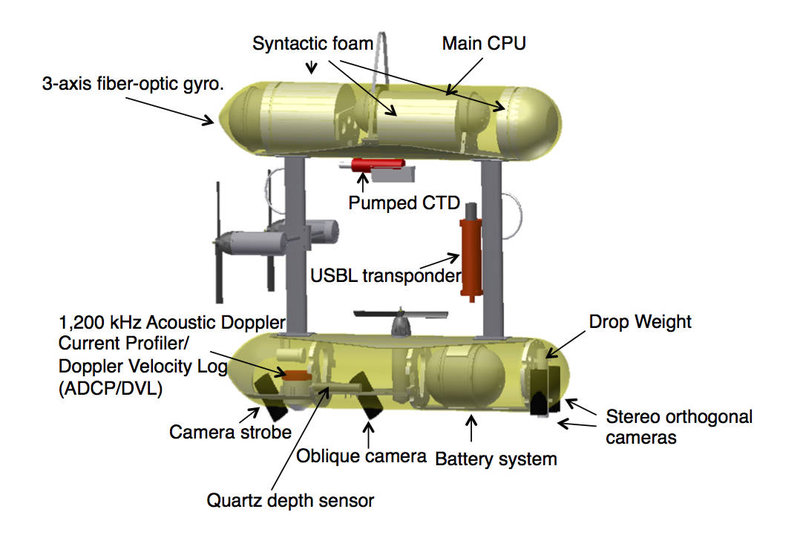
Some ocean environments are a challenge to study because they are difficult to get to. In cases like this, scientists turn to advanced technology like underwater robots.
Autonomous underwater vehicles (AUVs) are unmanned, untethered vehicles used to conduct underwater research. As opposed to remotely operated vehicles (ROVs), which are tethered to a service vessel by an umbilical, AUVs are independent. Via a micromodem, AUVs receive commands from an operator-controlled computer as to where, when, and what they sample. AUVs carry a variety of equipment for sampling and surveying such as cameras, sonar, and depth sensors. They can range in size from only a few hundred pounds up to several thousand pounds.
During the Surveying Deep-sea Corals, Sponges, and Fish Habitat Off the U.S. West Coast expedition, researchers will use NOAA Fisheries’ SeaBED AUV to quantitatively survey deep-sea fishes and habitats.

The SeaBED AUV on deck awaits deployment. Image courtesy of NOAA. Download larger version (jpg, 695 KB).
The SeaBED AUV is unique because it "flies" a few meters above the seafloor, instead of remaining in the water column like many other AUVs. The SeaBED AUV takes photographs every few seconds, providing a photographic record of fish and their habitat and allowing scientists to gather more information in rocky areas than ever before.
This expedition aims to better understand the location, distribution, status, and health of deep-sea coral and sponge ecosystems and to inform conservation and management actions. The SeaBED AUV that will be used during the expedition can dive 2,000 meters (6,562 feet) deep and work underwater for up to 6 hours while sending information back to scientists onboard their research vessel. Data can be relayed to the ship via an acoustic micromodem. In a single dive, the AUV can cover a 5- to 10-kilometer (3.1- to 6.2-mile) transect.
The AUV consists of two hulls connected by aluminum spars. With negative buoyancy in the lower hull and positive buoyancy in the upper hull, the AUV is stable in the ocean's pitch and roll. Three carbon fiber propellers, originally designed for use in model airplanes, provide the thrust needed to propel the AUV down to the seafloor.

Schematic diagram of the SeaBED AUV. Image courtesy of NOAA. Download larger version (jpg, 80 KB).
The thousands of pictures taken by the AUV can be blended into larger photomosaics to provide a more complete perspective of the ocean floor than currently available. The information gathered by the AUV allows researchers to explore the relationship between fish, invertebrates, and their habitats.